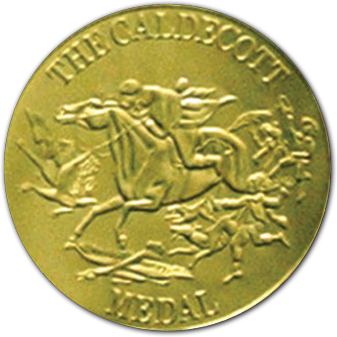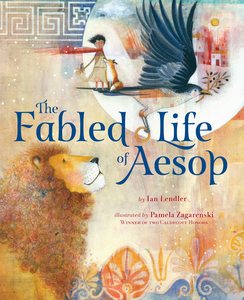
The Caldecott Medal winners for 2021 will be announced in January. I have my favorite to share with you in this post, which I will evaluate my using the Caldecott criteria listed for this award. I’ll also suggest a runner-up.

Five Stars – *****
I have loved Aesop’s fables since I was a child, and have used them for reading and writing lessons with students from Kindergarten to Grade 8, and my own grandchildren. In fact, my granddaughter Stassi and I were just talking about finishing things quickly, or taking the time to do them well. I told her the story of The Tortoise and the Hare.” Her five-year-old mind couldn’t quite fathom the meaning of “slow and steady wins the race.” So, I plan to use Ian Lendler’s book to renew our conversation about life’s lessons embedded in the morals at the end of Aesop’s stories. For example, The Boy Who Cried Wolf advises its listeners or readers that “No one believes a liar, even when they tell the truth.”
- The book must provide the child with a visual experience, one that unifies story elements, such as plot and theme, cohesively through the series of pictures.
Absolutely meets this criteria! I am familiar with Pamela Zagarenski’s artwork, as she has already won the Caldecott Honor Award two times. I’m truly hoping that this third nomination will be the winner. The illustrations are so multilayered and exquisite, that I can easily envision them being showcased at the MOMA. What better way to teach children how to “read” the arts, and to appreciate the way the Zagarenski uses various mediums and artistic techniques to create her spectacular illustrations. In the video below, Lendler describes the collaboration between artist and author to make Aesop’s fables come alive once more for 21st Century children. He also shares that Zagarenski contacted COVID 19 in the spring of 2020, right about the time they released The Fabled Life of Aesop.
- Children must be the target audience, with childhood being defined as up to fourteen years of age. Books within this entire age range may be considered, but the intended age group’s understandings, abilities, and appreciations should be taken into consideration.
This story within a story, starts with the life of Aesop as a slave, who used his fables to “speak in code” with his fellow slaves about the injustices in their life. The morals and themes are portrayed through the words of animals. Afterwards, Lendler embeds Aesop’s fables within the body of the picture book. The illustrations are stories within stories as well, so author and illustrator complement one another. Aesop’s fables have stood the test of time, as they have been told and retold for over 2,500 years. The morals at the end of each fable still have the capacity to teach children about greed, deceit, honesty, and social injustice.
- “Distinguished” is
- marked by eminence and distinction; noted for significant achievement
- marked by excellence in quality
- individually distinct.
Lendler’s picture book, The Fabled Life of Aesop, has received several starred reviews and was hailed by School Library Journal as “amazing” and “a remarkable book.” He also writes nonfiction and graphic novels. Her talent is “individually distinct.”
Pamela Zagarenski is the winner of two Caldecott Honors. The books she has illustrated have also been Booklist Editor’s Choices, Horn Book Fanfare and Bulletin Blue Ribbon books, winners of Bank Street’s Claudia Lewis Award, and translated into many languages.
- The work must be original; illustrations reprinted or coupled are ineligible – Meets this criterion.
- The work must be published in the United States; original publications from other countries are ineligible – Meets this criterion.
- The work must be published in the previous year. Meets this criterion.
- The artist must be a United States citizen or have an established, maintained residence in the United States. Meets this criterion.
- The artist’s entire body of work may not be taken into consideration. Meets this criterion as each work is unique.
This video provides lots of inside information about the creation of the book, the author’s purpose, and the process Pamela Zagarenski uses to develop the artwork in this book. Tweens and middle schoolers will enjoy learning that a line from The Black Panther movie, comes right from an Aesop tale. It’s “I would rather starve while I’m free than be well-fed in chains.”
A CAUTIONARY NOTE – The illustration accompanying The Boy Who Cried Wolf story is not appropriate for younger children. The wolf has obviously eaten the boy, and is spattered with blood.
Honeybee
My runner up choice is Honeybee. The author provides a comprehensive overview in this video. My granddaughters are afraid of bees, so I’m going to see what their reaction to this book are this weekend. I’ll let you know.
I chose this book as nonfiction is very popular with elementary school children, and the extremely close up illustrations will entice them to learn more about the life of bees and their impact upon the earth’s ecosystem. I loved that the author focused upon the life of one honeybee in a realistic fashion – it’s an accurate and authentic portrayal that enables young readers to “honor the honeybee.”It definitely would make a “Green Deal” book list.
Happy reading!
Joann
